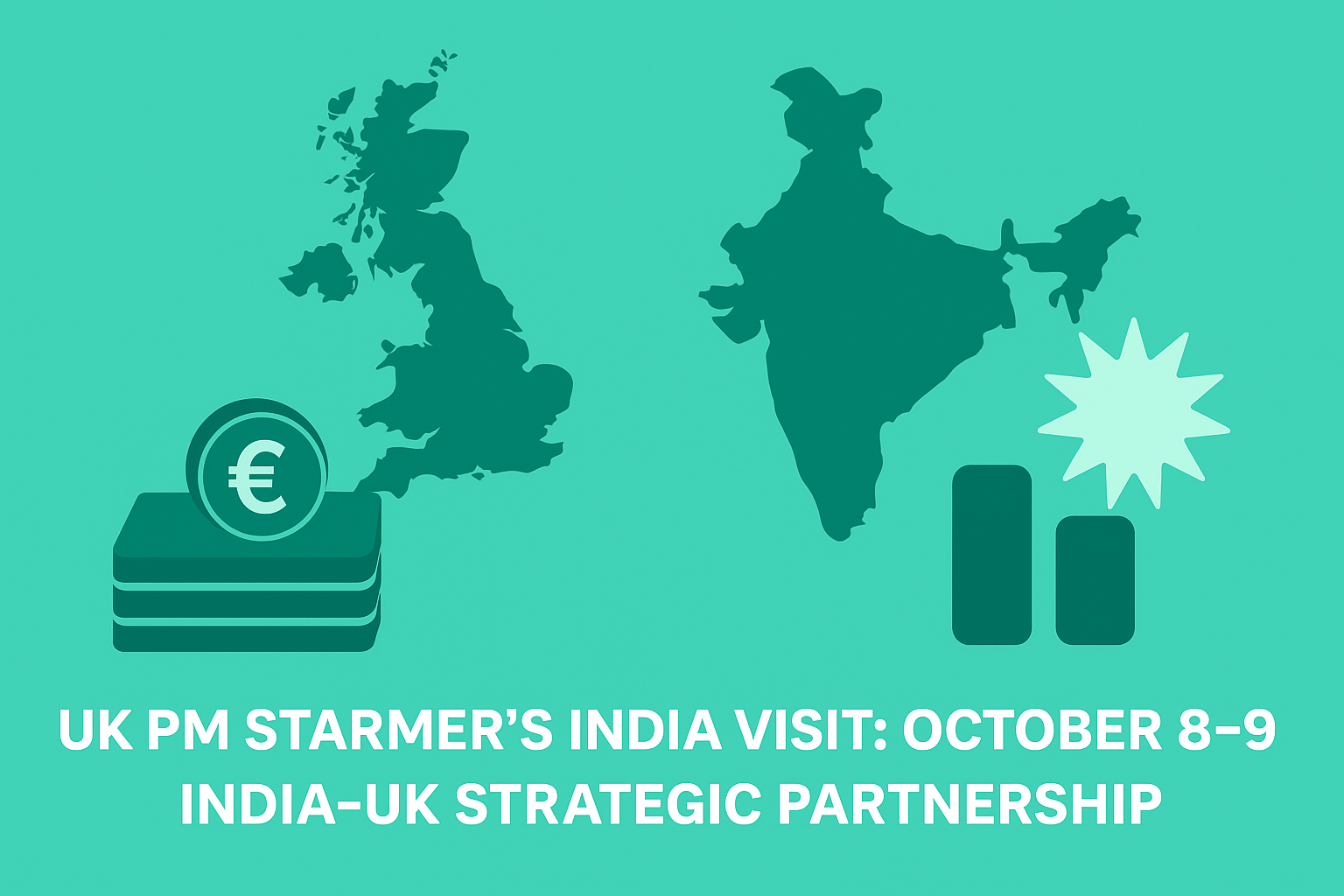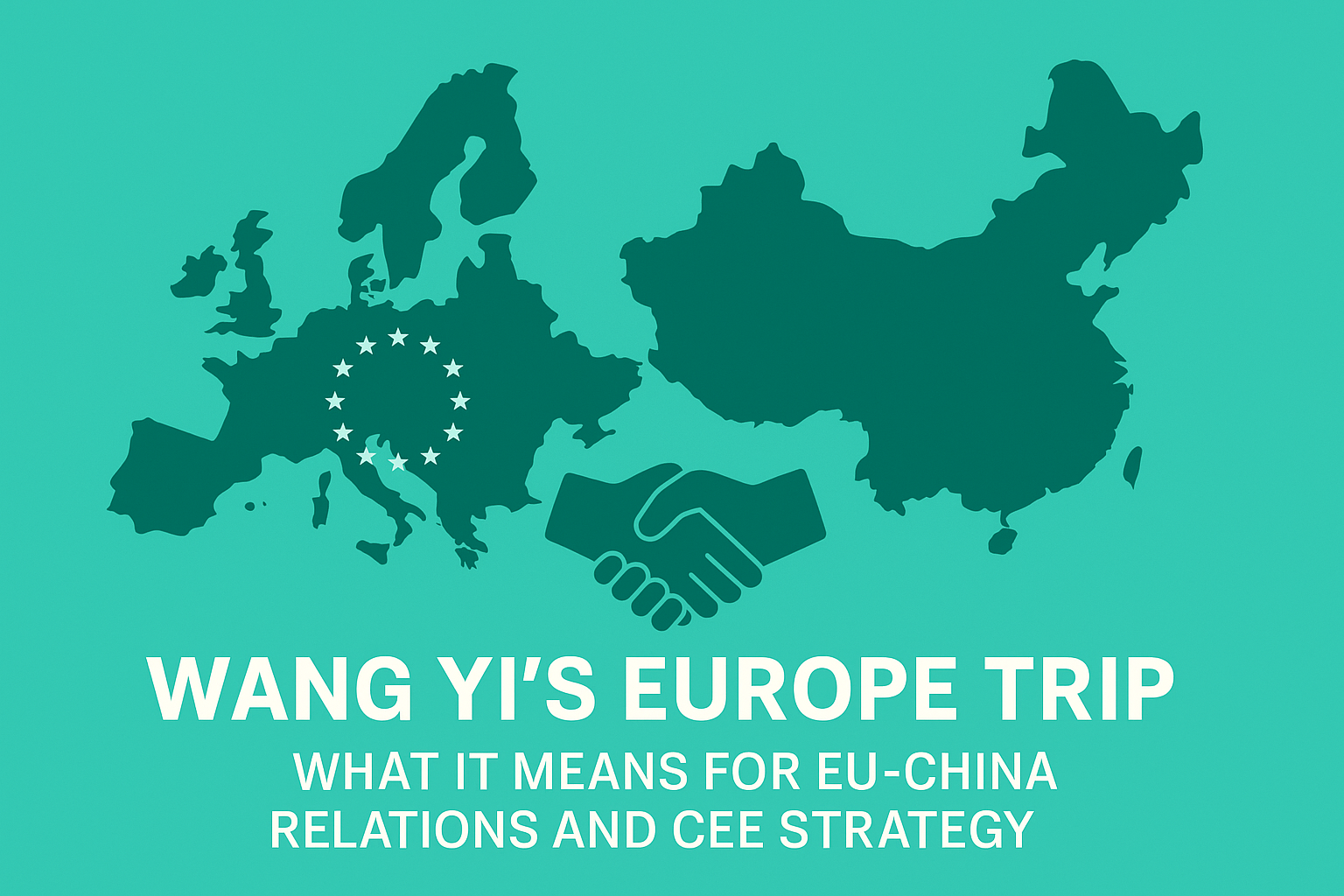Wrote By:Global Economist 2025/10
- 1. Overview
- 2. Background: Why the UK and India Are Deepening Ties Now
- 3. Structure of Vision 2035 and Priority Areas
- 4. Expected Deliverables from the Visit
- 5. Political & Geopolitical Significance
- 6. Challenges & Risks
- 7. Implications for Japan and the Wider Indo-Pacific
- 8. Conclusion – Executive Summary
1. Overview
UK Prime Minister Keir Starmer will pay an official visit to India on October 8–9, 2025, focusing on advancing the “India–UK Vision 2035” framework.
The initiative aims to strengthen cooperation across five key pillars — economy, security, technology, human capital, and sustainability — marking a major milestone in the evolution of UK–India relations.
The visit reflects the intersection of two major trends: the UK’s post-Brexit “Global Britain 2.0” diplomacy, and India’s rise as a global economic and geopolitical power. Together, these trends are reshaping the strategic architecture of the Indo-Pacific.
2. Background: Why the UK and India Are Deepening Ties Now
(1) The UK Context – “Global Britain 2.0”
- After Brexit, London is recalibrating foreign policy to reduce EU dependency and pivot towards the Indo-Pacific as a new strategic and economic hub.
- Starmer’s government maintains the “Global Britain” doctrine but emphasizes alliances with democratic market economies.
- India has become a vital partner: the 6th-largest trading partner of the UK, a key investor in fintech and pharmaceuticals, and home to a 400,000-strong Indian diaspora that significantly influences UK politics and business.
(2) The Indian Context – “Atmanirbhar Bharat” (Self-Reliant India)
- India’s “multi-alignment” diplomacy seeks to maximize strategic autonomy through diversified partnerships.
- The 2025 India–UK Free Trade Agreement (CETA) enables access to UK capital, technology, and education while supporting India’s manufacturing and export drive.
- The UK–India axis complements India’s broader Indo-Pacific strategy alongside the US, Japan, and Australia.
3. Structure of Vision 2035 and Priority Areas
| Pillar | Objectives | Strategic Importance |
|---|---|---|
| 1. Trade & Investment | Implement FTA; lower tariffs and non-tariff barriers; upgrade investment protection | Double bilateral trade to ~US$200 bn by 2035 |
| 2. Technology & Digital | Cooperation in AI, quantum computing, cybersecurity, space tech, 5G/6G | Build a “third pole” in global tech governance |
| 3. Defense & Security | Expand naval exercises (Konkan series); co-develop defense systems | Strengthen Indo-Pacific deterrence architecture |
| 4. Climate & Energy | Joint work on green hydrogen, renewables, carbon neutrality | Create a growth-compatible decarbonization model |
| 5. People & Education | Mobility, visas, joint degrees, research exchange | Accelerate skilled labor circulation and innovation |
4. Expected Deliverables from the Visit
- FTA Implementation Framework
– Signing of the CETA Operational Agreement to accelerate tariff reductions and regulatory alignment. - UK–India Tech Bridge 2.0
– £200 mn joint R&D fund for AI, quantum, and green technology projects. - Defense Technology Partnership MoU
– Roadmap for co-development of naval drones, EW systems, and surveillance technologies. - Young Professionals Scheme Expansion
– Work visa duration extended to 3 years; annual quota doubled to 6,000 participants. - Green Investment & Energy Cooperation
– UK Export Finance (UKEF) to provide £1 bn credit for Indian renewable projects; BP–ONGC hydrogen JV announced.
5. Political & Geopolitical Significance
- Reframing the UK–India Axis: The relationship is moving from post-colonial heritage toward a partnership of equals.
- Balancing the Great-Power Rivalry: Offers a non-aligned yet complementary structure within US–China competition.
- Democratic Connectivity: Joint leadership in AI ethics, cybersecurity, and global data governance, reinforcing the liberal international order.
6. Challenges & Risks
- Domestic Adjustment under FTA: Indian textile and agriculture sectors may resist rapid liberalization.
- Technology Export Controls: UK restrictions on sensitive tech may limit collaboration.
- Migration Politics: UK immigration limits could constrain talent mobility.
- Regional Balancing: Coordination with Pakistan, China, and Russia remains delicate.
7. Implications for Japan and the Wider Indo-Pacific
- The UK–India partnership complements Japan–India and UK–Japan frameworks, potentially forming a “Triangular Cooperation” in supply chains and clean energy.
- Expansion of defense, digital, and green finance initiatives will open participation opportunities for Japanese and ASEAN firms.
- As the Indo-Pacific becomes a focal zone for democratic economic integration, UK–India alignment enhances regional stability and diversification.
8. Conclusion – Executive Summary
The Vision 2035 framework symbolizes a paradigm shift from historical ties to a strategic, technology-driven partnership built on shared democratic and economic values.
It positions both nations as co-architects of a multipolar Indo-Pacific order, bridging Europe and Asia through innovation, sustainability, and security cooperation.
The Starmer–Modi meeting will likely mark the formal elevation of the relationship to a “Comprehensive Strategic Partnership,” establishing the UK–India axis as a core pillar of 21st-century global governance.


